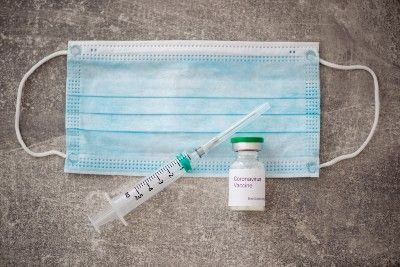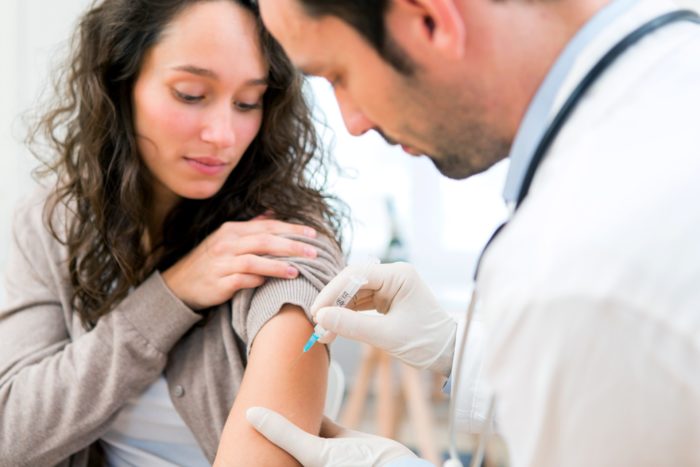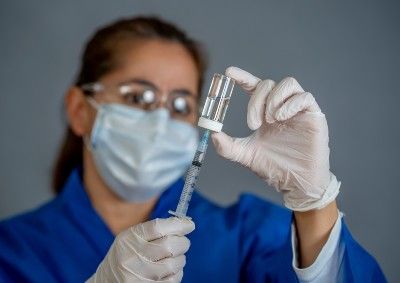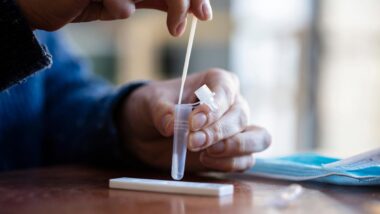Top Class Actions’s website and social media posts use affiliate links. If you make a purchase using such links, we may receive a commission, but it will not result in any additional charges to you. Please review our Affiliate Link Disclosure for more information.
WITH TWO CORONAVIRUS VACCINES approved and more on the way, consumers may be wondering exactly how these inoculations work and whether they are safe.
It has been over a year since the first case of COVID-19 was diagnosed, preceding months of lockdown and hardship. Since the virus first gripped the United States in early 2020, the global pandemic has killed over 330,000 Americans and affected countless others. Luckily, the end of the pandemic may be in sight with the development of multiple coronavirus vaccines.
Although widespread vaccination is needed to achieve herd immunity, many consumers may be concerned about the safety of these vaccines. Unfortunately, considering the relatively quick timeline of vaccine development and testing, it may take months or years to discover any adverse events associated with the coronavirus vaccine.
Top Class Actions regularly covers legal issues surrounding medications, medical devices and healthcare, including Zostavax lawsuits over vaccine safety. As the latest news is discovered surrounding the safety of COVID-19 vaccines, our readers can rest assured knowing that they are up to date on new developments.
Currently Approved COVID-19 Vaccines
There are currently two vaccines approved by the U.S. Food and Drug Administration (FDA) for COVID-19 prevention: the Moderna vaccine and the Pfizer & BioNTech vaccine.
Traditional vaccines use a living or dead virus to elicit an immune response. These inoculations work in a similar way to the immunity gained from contracting a virus. One example of this mechanism is widely known: getting chicken pox once typically makes you immune to the virus in the future.
Unlike vaccines that use a dead or alive-but-weakened virus, both Pfizer’s and Moderna’s COVID-19 vaccines use a newer technology that relies on genetic material to “prime” the body’s immune system to respond to the virus.
The vaccine uses messenger RNA (mRNA), a type of genetic material used to create proteins in the body, to create a “spike protein.” After the body’s cells make this protein, the spike is displayed on the outside of the cells’ surface in a similar way to the “spikes” seen on the outside of the COVID-19 vaccine. Although this does not cause a viral infection, these spikes teach the immune system how to identify and protect against the actual virus based on its proteins.
Through this priming process, vaccinated people will have the antibodies ready to identify and destroy the real coronavirus to prevent an infection.
Moderna Vaccine
Moderna’s coronavirus vaccine was developed in partnership with the National Institutes of Health (NIH) and received emergency authorization from the FDA on Dec. 18. The vaccine is given in two doses 18 days apart.
Preliminary test results from Moderna’s clinical trials showed a 94.1% effective rate in preventing COVID-19 infections. Of the 15,000 clinical trial participants, only five patients who received the vaccine developed the viral infection, and none of these patients suffered from serious illness.
After these results were announced, Dr. Anthony Fauci, director of the National Institute of Allergy and Infectious Disease, called this high efficacy result “very exciting” and “truly outstanding.”
According to the Centers for Disease Control and Prevention (CDC), the Moderna COVID-19 vaccine has only been associated with mild to moderate side effects in clinical trials. Injection-site pain, swelling and redness is common, as are chills, tiredness and headaches. In clinical trials, the bulk of vaccine reactions occurred after the second dose of the vaccine, the CDC revealed.
Pfizer and BioNTech COVID-19 Vaccine
Pfizer and BioNTech have also developed a coronavirus vaccine, which was authorized by the FDA on Dec. 11. Like the Moderna vaccine, Pfizer’s is given in two doses 21 days apart.
According to the CDC, Pfizer’s vaccine is slightly more effective than Moderna’s, with a 95% efficacy rate confirmed in clinical trials.
A few patients in Pfizer’s clinical trials did suffer from severe COVID-19 illness — sending them to the hospital or ending in death — despite being vaccinated. However, even in light of these cases, data reportedly suggests vaccinated outcomes were still better than placebo outcomes.
The Pfizer COVID-19 vaccine has been linked to mostly mild and moderate side effects such as injection-site pain, headaches, fever, fatigue and chills. The CDC reveals the vaccine was also linked to severe side effects in a “small number” of patients.
Although both Moderna’s and Pfizer’s vaccines are mRNA-based and must be kept cold in order to protect the vaccines, Pfizer’s vaccine needs to be kept colder than Antarctica at negative 70 degrees Celsius, according to NPR. Moderna’s vaccine also needs to be kept at low temperatures of minus 20 degrees Celsius — but nowhere near as cold as Pfizer’s product. Dry ice and other unique packaging is being used to keep these vaccines effective.
Coronavirus Vaccines Under Development
In addition to the two vaccines approved by the FDA, AstraZeneca, Janssen — Johnson & Johnson’s pharmaceutical subsidiary — and Novavax are all working to finalize their own vaccines.
Janssen/Johnson & Johnson Vaccine
Johnson & Johnson’s COVID-19 vaccine is still in clinical trials, though these results should be available to review this month.
The vaccine works in a similar way to the Moderna and Pfizer vaccines by using genetic information. However, Janssen’s vaccine is different in that it uses double-stranded DNA instead of single-stranded RNA.
This DNA reportedly includes a cold-causing virus known as Adenovirus 26 along with a coronavirus spike protein. Similar adenovirus-based vaccines have been developed for diseases like Ebola, with the first approval of such a vaccine seen last year. Other adenovirus vaccines are reportedly being researched for HIV and Zika viruses.
Once the adenovirus vaccine delivers the protein spike, it serves a similar function to the others in priming the body’s immune system to protect against COVID-19.
In comparison to the approved mRNA vaccines, Janssen’s adenovirus vaccine is more durable and can be stored at higher temperatures of 2 to 8 degrees Celsius.
AstraZeneca Vaccine
The AstraZeneca vaccine was developed in partnership with the University of Oxford, according to a New York Times report. While initial clinical results showed the vaccine could be up to 90% effective in preventing COVID-19, these results have been questioned after mistakes in trial vaccine doses were revealed.

Despite concerns about the vaccine’s clinical trial results, the vaccine was approved for use in the United Kingdom on Dec. 30, making the U.K. the first country to approve the vaccine. Approval from Argentina followed shortly after, Reuters reported.
Although the efficacy rate of the AstraZeneca vaccine is lower than other coronavirus vaccines, the company notes its vaccine’s low cost and normal refrigeration requirements make it more accessible than other options.
Novavax Vaccine
The Novavax coronavirus vaccine is still in Phase 3 of clinical trials.
Unlike other vaccines approved and in development, this inoculation uses a protein spike made through Novavax’s recombinant protein nanoparticle technology. The third phase of clinical trials only opened Dec. 28, meaning it may be some time before we see the efficacy of this unique vaccine.
Vaccine Safety & Legal Concerns
Although some rumors around vaccinations — including the disproven link between vaccines and autism — can be waved off as myths, this does not change the fact vaccinations can be associated with significant consequences for patient health. These symptoms may range from mild, localized pain following an inoculation to life-threatening allergic reactions. In some cases, these adverse effects may not even be linked to vaccines until years later.
According to the CDC, after getting the COVID-19 vaccine, patients may experience mild symptoms that resemble those seen with other vaccinations. Injection-site pain and swelling, fever, chills, tiredness and headaches are all common.
Like any vaccine, the COVID-19 vaccine can cause a severe allergic reaction that can be life threatening. The CDC recommends people with a history of vaccine allergies speak with their doctor about whether the coronavirus vaccine is right for them.
As a result of the relatively short time frame of vaccine development and testing, the long-term consequences of the various coronavirus vaccines may not yet be fully understood.
In the weeks and months following vaccine administration, new reports of COVID-19 vaccination-related side effects may come rolling in. In time, these reports could prove the vaccines to be either safe and effective or riddled with unexpected side effects similar to the neurological complications reported with the Zostavax vaccine. Unfortunately, only time will tell.
To stay up to date on this and other drug safety news, sign up for our free weekly newsletter. Through this newsletter, Top Class Actions readers can read about the latest developments in product safety, legal issues, lawsuits and settlements.
Read About More Class Action Lawsuits & Class Action Settlements:

















13 thoughts onWhat Are the COVID-19 Vaccines and How Safe Are They?
I got Bells Palsy from the Phizer shot. I received it at CVS if that makes a difference. It’s been almost a year and I still have problems from it.